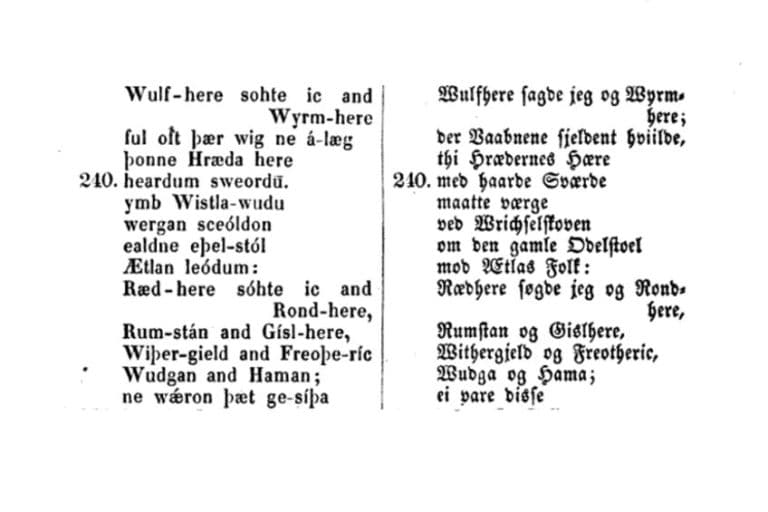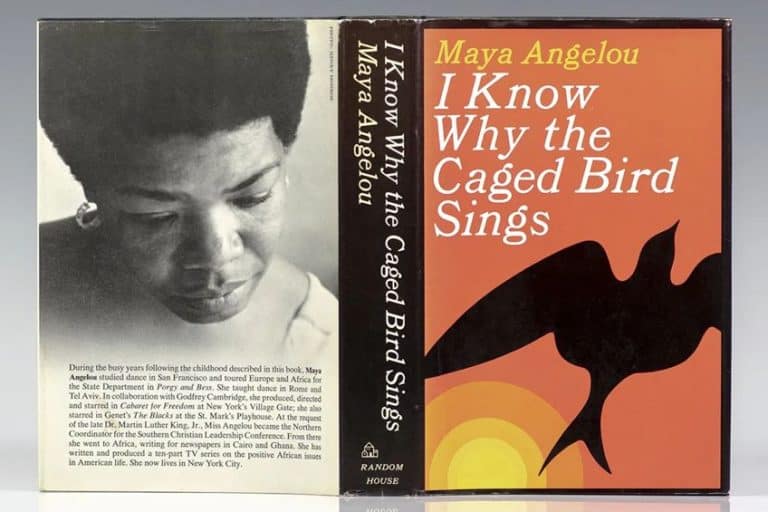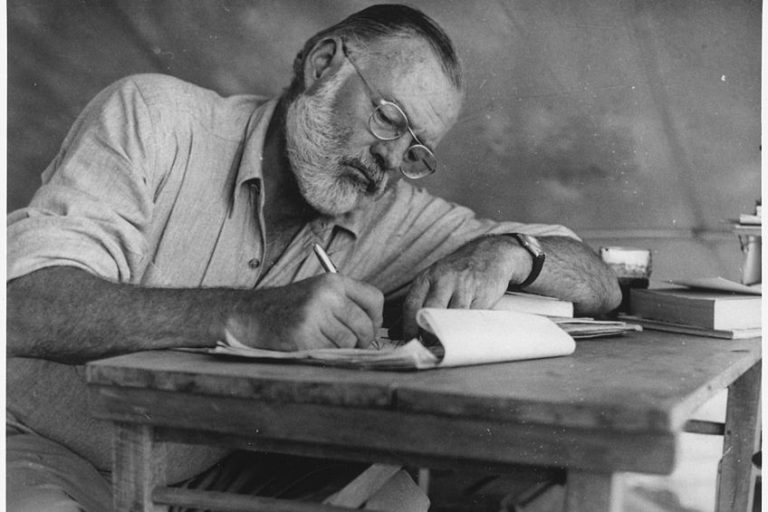What Is a Meter in Poetry? – Creating Tempo in Your Poems
What is a meter in poetry? This is what we will examine over the course of this article. We will discuss the origins of poetic meter, the purpose of meter in a poem, the ways to identify and write poetic meter, and the different types of meter, along with an example of a meter or two. If you are interested in this topic, then keep reading to learn more about poetic meter and what it does in the poems that make use of it.
What Is a Meter in Poetry?
Poetic meter is a common feature of poetry. It is the use of a specific rhythm structure within the lines of a poem. The basic idea is that there is a specific beat in a poem and that the arrangement of these beats constitutes the poetic meter. Each instance of meter is known as a foot, or feet in the plural. These metrical feet are arranged around a certain number and order of stressed and unstressed syllables. The various types of meter will be discussed in more detail below.
Meter can also be singular or used in conjunction with other types of meter. Essentially, a poem does not need to make use of one type of meter throughout, and it can vary its use. However, some of the most famous instances of poetic meter, such as Shakespeare’s use of iambic pentameter, are present in all of his sonnets.

When it comes to the analysis of poetic meter, it can be analyzed in terms of an entire poem, singular stanzas, solitary lines, or even individual metrical feet. There is no rule that determines how meter can be analyzed in a poem, but as many poems use a singular form of meter throughout, it is common for a poem to be analyzed as a whole when examining the use of meter.
In addition to this, it should be noted that poetic meter is not a necessity within poetry. There are many poems, especially more contemporary poems in the free verse tradition, that do not make use of a specific example of a meter structure.
This does not mean that “meter” in the abstract does not exist within said poetry, but rather that it cannot be formalized in the way that the more traditional types of meter are formalized.
The Origins of Poetic Meter
Poetic meter is not a new thing in the realm of poetry, and specific metrical arrangements can be found in examples of ancient poetry, such as the poetry of ancient Greece and Rome. These ancient people would make use of a number of different types of poetic meter, and similar ideas can be found throughout the ancient world, such as in Sanskrit and Persian poetry.
There has been extensive experimentation with poetic meter over the centuries, such as medieval European poets developing new forms and arrangements. Many of which are hardly used any longer. In the English language, it was during the Renaissance that iambic pentameter became the preferred form of poetic meter.

The uses and types of meter have expanded and developed since then, and contemporary poets have access to a number of different metrical structures that can be used. However, there is always room for innovation, and newer forms of poetic meter could be developed at any point. There will likely be no end to poetic meter as variations can always be subject to experimentation and implementation.
The Purpose of Poetic Meter
Why does meter exist? The answer to this question is quite simple. As poetic meter entails the use of a rhythmic repetition of stressed and unstressed syllables within the lines of a poem, it is generally seen as integral to the rhythm of a poem. A poem does not need to make use of formalized meter, as has been mentioned, but the use of meter can help when reading a poem aloud so that the correct vocal performance of the poem can be attained.
In many ways, meter is the thing that adds a certain musicality to poetry, but it does operate alongside other poetic devices, such as rhyme, alliteration, assonance, and so on. Meter allows for a structural component that runs throughout a poem alongside other formal structural elements, such as the specific arrangement of stanzas.
However, as will be discussed in more detail below, there are many different types of meter that can be found in poetry, and because of this, each of them has a different purpose.
Some of those purposes will be discussed below, but as an example, something like iambic meter, which makes use of a paired structure in which an unstressed syllable is followed by a stressed syllable, has a particular feeling to it. In terms of iambic meter, it can emulate the cadence and flow of ordinary communication, and so it sounds more like everyday language. This may be desirable to create a more naturalistic flow to a particular poem.
There are many different examples of poetic meter, and each of them has their own purpose. For this reason, it becomes important to be able to identify meter in a poem, especially when making use of meter in your own poetry. Understanding how to utilize poetic meter can be incredibly important, but it is not necessarily essential to being able to understand or enjoy poetry.

How to Identify Meter in a Poem
Being able to identify meter in poetry is important if you want to be able to analyze all aspects of a poem, and being able to analyze a poem can help with writing them too. So, to analyze meter is to understand meter. Meter is made up of metrical feet, and each of these “feet” is a unit of meter. A foot can be of varying lengths, but they are typically arranged in pairs or sets of threes. For instance, iambic meter is arranged in pairs of unstressed and stressed syllables.
When it comes to identifying meter in a poem, it becomes important to physically read a poem out loud.
It is best to hear the cadence of the syllables to best hear the rhythm. Each syllable in a poem needs to be noted on an individual level, and each syllable needs to be broken away from every other syllable.
Meter is the study of syllabic emphasis in poetry, and so when analyzing meter, it can be helpful to rewrite a poem that is being analyzed and breaking the syllables up. For instance, if the word “metrical” is used, it should be separated into three syllables as such “me-tri-cal”. Each of these syllables entails a different emphasis.
Once these syllables have been broken into pieces, they can then be appointed their designated stress. In traditional metrical analysis, a / symbol is used above a stressed syllable to indicate that it is stressed, while an X symbol is used above an unstressed syllable for the same reason. This allows a word to be more easily analyzed. If we take the previous word as an example:
| / | X | X | ||
| Me- | -tri- | -cal |

This shows the way in which the word is arranged along one stressed and two unstressed syllables. Once the stressed and unstressed syllables have been identified, the specific arrangement of emphasis in the syllables can be used to determine what kind of metrical structure is used. If the above word’s emphasis was replicated, it would be an example of dactylic meter.
However, different poems will make use of different examples of meter in their structure. In addition, you should also count the number of syllables per line, the number of metrical feet, and so on.
Each of these elements together can be used to analyze why those specific instances of poetic meter were used over other varieties.
How to Write Meter in a Poem
Writing in meter is similar to analyzing meter. If you want to write in meter, then you cannot “write from the heart” in the more contemporary sense of the idea. You need to instead pay close attention to the way in which syllables are arranged in specific words, and if a very specific metrical structure is used, certain words can be entirely off-limits. For instance, the jokingly used example of the word “metrical” above is actually an instance of a word that cannot be used in iambic meter. Iambic meter entails the use of an alternating arrangement of unstressed and stressed syllables, so a word that has a stressed syllable followed by two unstressed syllables simply cannot be used.

Ultimately, if you want to write metrical poetry, you need to understand meter and how syllables can be stressed or unstressed. In addition to this, you need to actually choose a specific type of meter, such as iambic or trochaic meter, and you need to determine how many metrical feet will be in each line as it is usually expected for a pattern to be replicated. For instance, the sonnets of William Shakespeare all use iambic pentameter. This means that they all use an unstressed and then stressed syllable pairing arrangement, and each line makes use of five instances of these pairs for a total of ten syllables per line.
Once you have decided on the poetic meter that you want to use, read through your poem aloud to hear how it sounds. It may be necessary to analyze your own poem’s meter to ensure that it has retained the metrical feet that you wanted to use in it. However, irregular metrical structures can also be used, and there are no hard and fast rules that state that you need to stick to a specific meter.
Some may want to out of a sense of stylistic desire, and for those people, you need to pay very close attention to how you use your syllables.
Types of Meter
There are many different types of meter in poetry, but will only examine six of those varieties. Each example of a meter below is arranged according to their commonness in the English language and their logical relation to one another, but any of them can be used. The first is, by far, the most famous of them all though. It should also be noted that a poem can also ignore poetic meter and instead be arranged in a more irregular form that may feel more like prose. So, poetic meter is not a necessity when writing poetry, but it is a common feature, and learning to use it can be beneficial if you too wish to write poetry.

Iambic Meter
The iambic meter structure is the most common form of poetic meter in the English language. This particular form entails the use of pairs of syllables. The first of the syllables is unstressed while the second is stressed. These pairs are known as iambs, and they can be replicated as often as needed within a poem to produce the necessary number of lines. There are a number of different varieties of iambic meter, such as iambic dimeter, which entails the use of two iambs per line, or iambic pentameter, which makes use of five iambs for every line.
Iambic pentameter is, by far, the most famous of the forms of iambic poetic meter in the English language as it emulates common speech.
Trochaic Meter
The trochaic meter structure is essentially an inverse of iambic meter. This means that it too makes use of a two-syllable structure, but the stress is reversed. It starts on a stressed syllable and ends on an unstressed syllable. These pairs are known as trochees, and each trochee can be used as often as needed, in a similar sense to iambic meter above.

This particular example of a meter structure is typically used to create a falling rhyme design in a poem. This creates a more mournful feeling within poems that use this particular form of poetic meter. This is far less common than iambic meter, but it has been used by many poets over the centuries.
Pyrrhic Meter
The pyrrhic meter structure is another example of a meter that makes use of a two-syllable structure, but it differs from both the iambic and the trochaic because it does not include any stress. The syllables that are used in these pairs are unstressed, and for this reason, this type of meter is quite uncommon. Pyrrhic meter was quite common in classic Greek poetry, but in the English language, the use of unstressed syllables alone would lead to a monotonous structure. For this reason, it is both fairly uncommon and, when used, it is used alongside other types of meter.
On its own, it does not have a particularly emotive sound, and so it needs to be supplemented with other examples of poetic meter.
Spondee Meter
The spondee meter structure is the inverse of pyrrhic meter as trochaic is the inverse of iambic. The idea in this form of poetic meter is that it is also arranged in a two-syllable pair, but each of the syllables is stressed. This usually involves the use of two long syllables, and it is particularly useful when attempting to emphasize something in a poem.
However, it is also not often used on its own, and it is generally not used to write entire lines because it can produce a similar effect to pyrrhic meter. It needs to be used more sparingly to best make use of the kind of effect that it can produce. It can be used for emphasis, but an entire poem should not be emphasized, and for this reason, it is quite uncommon.
Anapestic Meter
The anapestic meter structure is not like those that have been discussed before. Instead, this example of poetic meter entails the use of a three-syllable arrangement. It is somewhat similar to iambic meter because it uses a stressed and unstressed arrangement. In this particular case, it entails two unstressed and one stressed syllable. This particular variety of poetic meter is often used in more comical poetic forms, and it is fairly uncommon.
In addition, it is sometimes known as reverse-dactylic meter. This variety will be discussed next.
Dactylic Meter
The dactylic meter structure is a similar form of meter to the above. Instead of using a pair of syllables, it uses three. It is somewhat related to trochaic poetry as it too starts on a stressed syllable. It entails the use of a stressed syllable that is then followed by two unstressed syllables. This arrangement was common in a lot of epic poetry but is not necessarily all that common in contemporary poetry.

Thanks to the use of dactylic meter in epic poetry, it has also sometimes come to be known as “the meter of the epic” or as “heroic hexameter”. However, epic poetry is not particularly common in mainstream poetry at present and so it has become less known.
We have come to the end of our examination of the question: “What is a meter in poetry?”. We have discussed the origins of poetic meter, the purpose of it, the ways to identify and use it, and the various types of meter that can be found in poetry. Hopefully, this article has provided a good overview and understanding of poetic meter, what it is, and how it can be used.
Frequently Asked Questions
What Is a Meter in Poetry?
Poetic meter is a structure that can be found in poetry. At the basic level, it is the rhythmic beat of a poem. Each instance of this beat is known as a foot, and each of these feet are generally arranged around sets of two or three syllables. There are a number of formal types of meter that can be used in poetry, and because of this, meter is often a commonly analyzed aspect of poetry.
What Are the Different Types of Meter in Poetry?
There are a number of different types of meter in poetry. The most common in the English language is iambic meter, but there are also varieties such as trochaic, spondee, pyrrhic, anapestic, and dactylic examples of poetic meter. Each of the different instances of poetic meter is used for a variety of purposes and they each entail different arrangements. For instance, iambic meter involves the use of an unstressed and stressed syllable pairing.
What Is the Most Common Type of Meter in Poetry?
The most common type of meter in the English language is iambic meter. More specifically, the variety known as iambic pentameter is the most common. This entails the use of five metrical feet in each line of a poem, and each metrical foot is arranged around a two-syllable, unstressed-and-stressed structure. This particular variety of poetic meter is found throughout the work of William Shakespeare and many other English writers.
Does a Poem Need to Use Meter?
Meter is generally understood in more formal arrangements. The use of stressed and unstressed syllables is used in all languages regardless of whether or not it follows a specific pattern. For this reason, all poetry can be said to use meter in a sense, but not necessarily in a formalized sense. Thanks to this, poetry does not need to use meter in the traditional sense that the term is used, but the term could be up for interpretation.
Where Did Metrical Poetry Originate?
Meter has existed in poetry since ancient times. There are instances of meter in Ancient Greek writing, as well as in Sanskrit, Persian, and Arabic sources. Meter has been used in a variety of cultures for a variety of reasons, and the rhythm that is produced through this method has remained an important tool for poets to make use of when they wish to add a rhythmic element that is more readily apparent.
Justin van Huyssteen is a freelance writer, novelist, and academic originally from Cape Town, South Africa. At present, he has a bachelor’s degree in English and literary theory and an honor’s degree in literary theory. He is currently working towards his master’s degree in literary theory with a focus on animal studies, critical theory, and semiotics within literature. As a novelist and freelancer, he often writes under the pen name L.C. Lupus.
Justin’s preferred literary movements include modern and postmodern literature with literary fiction and genre fiction like sci-fi, post-apocalyptic, and horror being of particular interest. His academia extends to his interest in prose and narratology. He enjoys analyzing a variety of mediums through a literary lens, such as graphic novels, film, and video games.
Justin is working for artincontext.org as an author and content writer since 2022. He is responsible for all blog posts about architecture, literature and poetry.
Learn more about Justin van Huyssteen and the Art in Context Team.
Cite this Article
Justin, van Huyssteen, “What Is a Meter in Poetry? – Creating Tempo in Your Poems.” Art in Context. September 18, 2023. URL: https://artincontext.org/what-is-a-meter-in-poetry/
van Huyssteen, J. (2023, 18 September). What Is a Meter in Poetry? – Creating Tempo in Your Poems. Art in Context. https://artincontext.org/what-is-a-meter-in-poetry/
van Huyssteen, Justin. “What Is a Meter in Poetry? – Creating Tempo in Your Poems.” Art in Context, September 18, 2023. https://artincontext.org/what-is-a-meter-in-poetry/.









